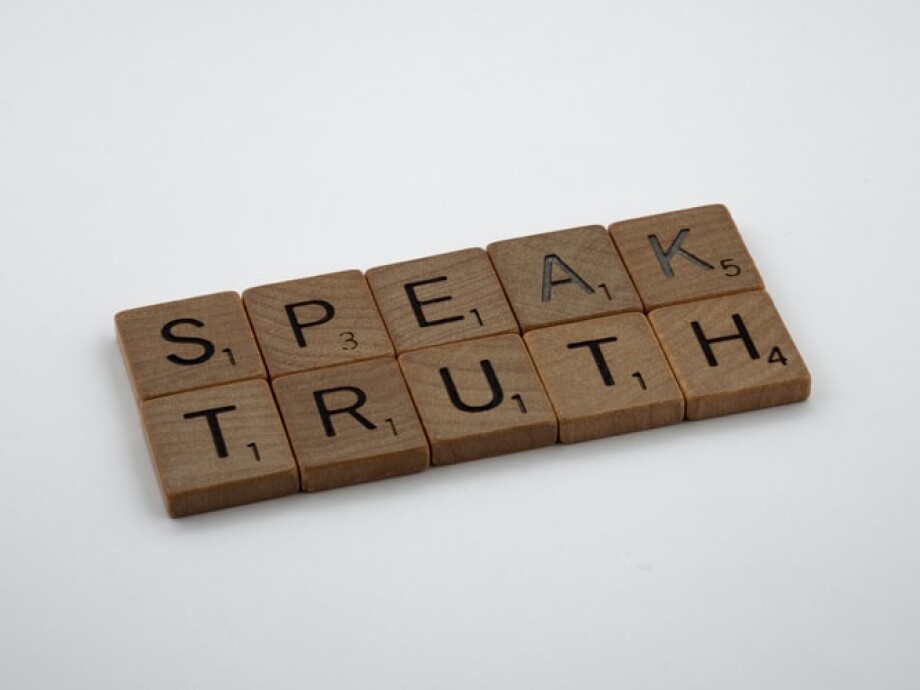Each year on April 30th, National Honesty Day challenges us not to lie in everything we do. People usually celebrate the day by answering questions truthfully all day long. They even use #NationalHonestyDay to share on social media. In this article, you will find some lesson ideas to discuss the topics of honesty and dishonesty with your students and find out their attitude to them. The tasks introduced below are suitable for the Intermediate level. Students will improve their listening and speaking skills and learn new expressions to talk about honesty and dishonesty.
Task 1: Warm-up
— Watch the video (from 00:12 till 00:22). Do you think it is possible not to lie ever? Why so (not)?
— What do you think are the most common lies?
— Watch the video (from 00:22 till 01:14) and compare your guesses. Which of the lies mentioned in the video have you ever told? Do you consider them white lies?
Task 2:
Rate the following things for dishonesty (1:perfectly okay, 2:depends on the situation, 3:totally dishonest). Explain your answers.
- Using public transport without buying a ticket.
- Making a product look much better than it really is.
- Promising to visit or phone someone when you have no intention of doing so.
- Reading other people’s messages without their permission.
- Not telling the waiter/waitress that they’ve undercharged you for your meal.
- Cheating on your partner.
Task 3:
Watch the video (from 00:31 till 02:20). What lies have these children ever told? Have you ever told those lies? Do you think kids and adults lie differently?
Task 4:
a) Here are some expressions to talk about honesty and dishonesty. Put the missing words back into the expressions below.
teeth, truth, white, economical, put, board.
- There are no secret negotiations. Our dealings have always been above___.
- Ok, I bent the ___ a bit. I told him it was my natural colour, but I didn’t say that my hairdresser helped me to keep it natural!
- Let’s be honest with each other and ___ our cards on the table.
- The politician was accused of being ___ with the truth.
- He’s lying through his ___ .
- I will call them and tell a little ___lie about having the flu because I don’t want to go to their party.
b) Match the idioms with their meanings.
- to be economical with the truth
- to put/lay one’s cards on the table
- to bend the truth
- above board
- to lie through one’s teeth
- to tell a little white lie
A. To tell an untrue story that is not harmful.
B. To say something that is not entirely true.
C. To omit important facts or give incomplete information without actually lying.
D. To speak honestly and openly about your feelings and intentions.
E. Open, honest and legal negotiations.
F. To tell a false story knowing it is not true.
Keys
A.
— board
— truth
— put
— economical
— teeth
— white
B.
— C
— D
— B
— E
— F
— A
Task 5
Answer the questions using the new expressions.
- Have you ever told a white lie? Is it a very bad thing to do?
- Do you easily understand that a person is lying through his teeth? How do you usually react in these situations?
- Who do you think is more economical with the truth — politicians or celebrities? Explain your choice.
- Is it difficult for you to put cards on the table after having lied for several years?
- Are deals with great businessmen always above board? Do they ever bend the truth? In which cases?
Task 6
— Watch the video — Two Truths and a lie ( from 00:27 till 01:25), and try to guess which one is a lie.
— Watch the continuation of the video (from 01:25 till 02:20). Did you guess right? What was the lie?
Task 7
Option 1
Work in pairs. Tell your classmate two truths and one lie about you. Then your friend tries to guess which one is a lie.
Option 2
Work in pairs. Choose one of the subjects below to talk about for two minutes. During the discussion try to tell one lie to your classmate. The latter then must try to guess which one is a lie.
- holidays
- work
- sport
- travel
- hobby
Task 8
Do you know how to spot a liar through mimics? If so, could you share what types of mimics show that a person is lying? If not, would you like to learn about it?
Watch the video (from 00:44 till 02:55). What types of mimics were mentioned in the video?
Task 9
Watch the video (from 00:44 till 02:55) again and match the sentence halves.
- While lying people open their eyes wide looking directly at you
- Change in body position shows
- Shrugging shoulders means
- A sudden jerk back is an instinctive reaction to a person
- Bowing the head is a sign
- By raising the chin
A. that a person is uncertain about what he/she is saying.
B. of feeling ashamed of your lies.
С. to make you trust them.
D. how small a person feels on the emotional side and how much protection they need.
E. feeling that others know they are lying.
F. a person intuitively tries to give their words more weight and themselves more authority.
Keys:
— C
— D
— A
— E
— B
Task 10
Discuss the questions.
- Do you think it is really possible to spot a lie through body language? Why (not)?
- Can actors hide these mimics while lying?
- Have you ever caught a lie with the help of mimics? If so, how?
- What do you usually do when you find out your friend has lied to you? Can you trust him/her after it?







 Маргарита Аветисян
Маргарита Аветисян 


